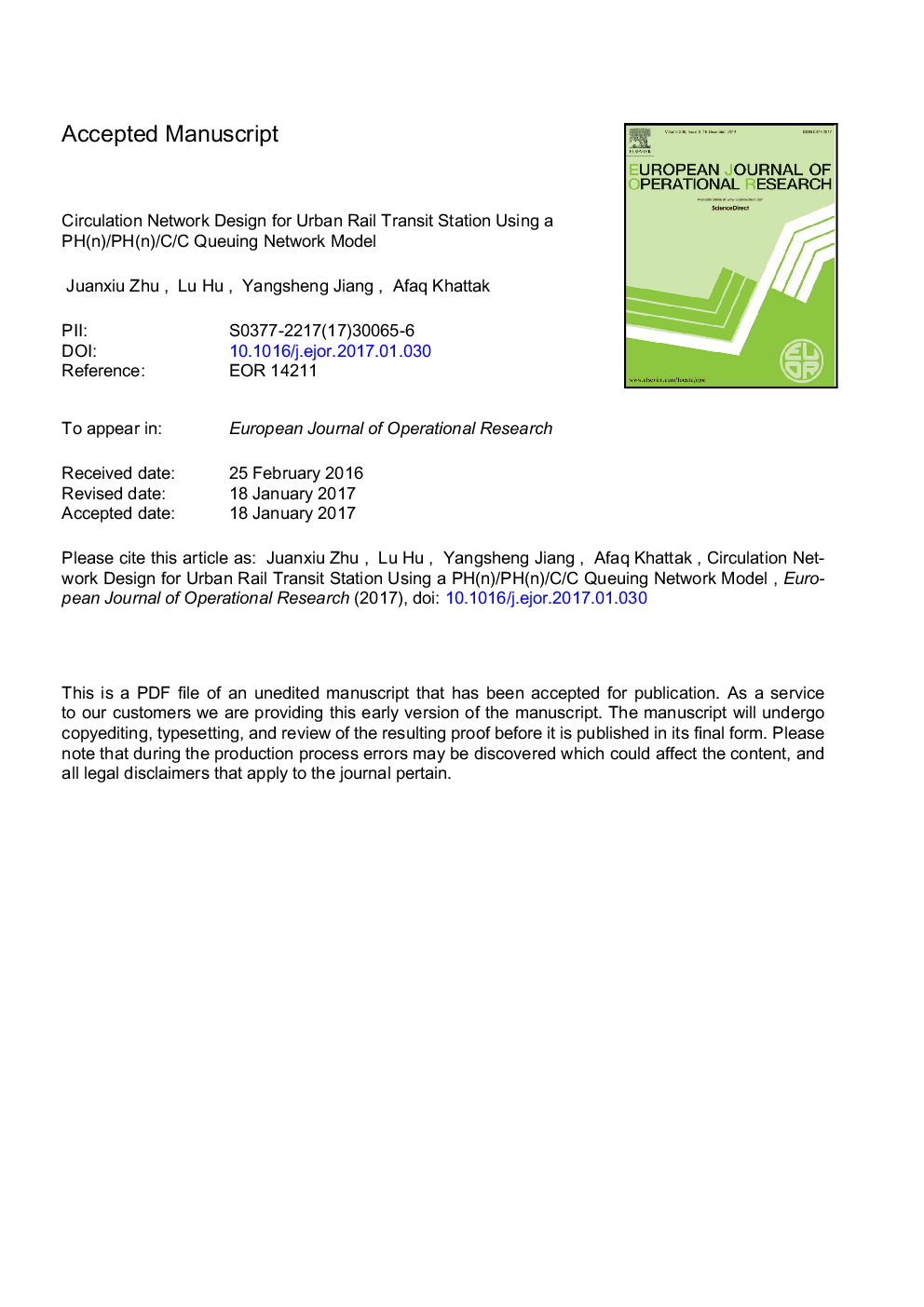| Article ID | Journal | Published Year | Pages | File Type |
|---|---|---|---|---|
| 4959682 | European Journal of Operational Research | 2017 | 47 Pages |
Abstract
Width is crucial to the performance of circulation network in urban rail transit station. However, poor performance has been observed in most existing circulation systems. In fact, randomness and state-dependence exist in circulation network where blocking and feedback cannot be ignored. In this paper, we develop a PH(n)/PH(n)/C/C state-dependent queuing network model with an analytical solution. This model describes the random and state-dependent arrival interval as well as service time by phase-type distribution. Feedback is also taken into account. The existing M/M(n)/C/C is a special case of the proposed PH(n)/PH(n)/C/C queuing network model, and the existing M/G(n)/C/C and D/D/1/C models can be approximated by the proposed network model. Then we present a programming formulation for circulation network design with blocking probability control based on the queuing network model. Finally, we illustrate the applicability of the proposed design method by comparing it with the existing design methods. The results show that: 1) the blocking probability is quite small and evenly distributed in the network designed by the new method, while much bigger and fluctuating blocking probabilities exist in networks designed by the other two methods; 2) other performance measures, like area per passenger, dwell time and throughput, are also considerably improved in the new method; 3) performance measures of the proposed method enjoy high performance-cost elasticity compared with the other two methods. An interesting insight is also obtained that the squared coefficient of variation for arrival interval plays an important role in determining the optimal width for circulation network.
Related Topics
Physical Sciences and Engineering
Computer Science
Computer Science (General)
Authors
Zhu Juanxiu, Hu Lu, Jiang Yangsheng, Afaq Khattak,
